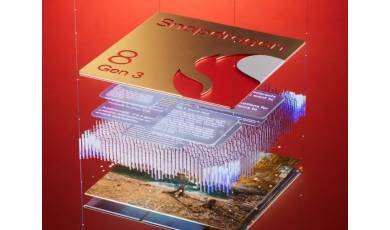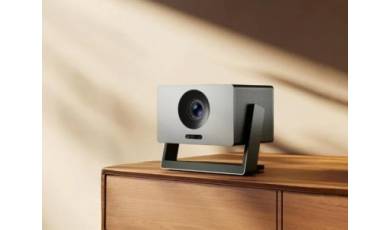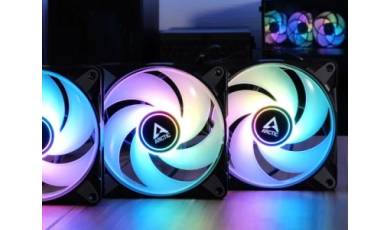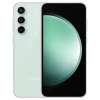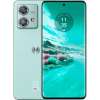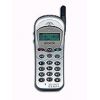ASUS has launched the XG27ACDMS, its cheapest 280Hz OLED monitor yet
|
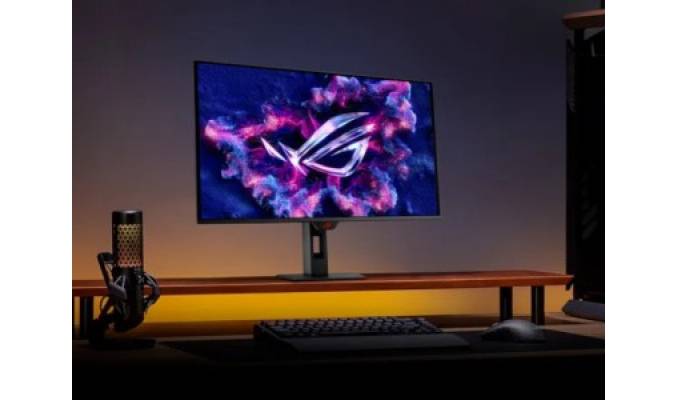 |
ASUS has unveiled the most inexpensive OLED OLED technology was invented by Eastman Kodak in the early 1980s. OLED panels are made from organic (carbon based) materials that emit light when electricity is applied through them. Since OLEDs do not require a backlight and filters (unlike LCD displays), they are more efficient, simpler to make, and much thinner. OLEDs have a great picture quality - brilliant colors, fast response rate and a wide viewing angle. OLEDs can also be used to make OLED lighting - thin, efficient and without any bad metals.monitor in its range. And it is part of the ROG gaming series, with professional-grade color reproduction and 280Hz refresh rate. OLED technology was invented by Eastman Kodak in the early 1980s. OLED panels are made from organic (carbon based) materials that emit light when electricity is applied through them. Since OLEDs do not require a backlight and filters (unlike LCD displays), they are more efficient, simpler to make, and much thinner. OLEDs have a great picture quality - brilliant colors, fast response rate and a wide viewing angle. OLEDs can also be used to make OLED lighting - thin, efficient and without any bad metals.monitor in its range. And it is part of the ROG gaming series, with professional-grade color reproduction and 280Hz refresh rate.
ASUS ROG Strix OLED OLED technology was invented by Eastman Kodak in the early 1980s. OLED panels are made from organic (carbon based) materials that emit light when electricity is applied through them. Since OLEDs do not require a backlight and filters (unlike LCD displays), they are more efficient, simpler to make, and much thinner. OLEDs have a great picture quality - brilliant colors, fast response rate and a wide viewing angle. OLEDs can also be used to make OLED lighting - thin, efficient and without any bad metals.(XG27ACDMS) has a 10-bit 26.5-inch quantum dot OLED OLED technology was invented by Eastman Kodak in the early 1980s. OLED panels are made from organic (carbon based) materials that emit light when electricity is applied through them. Since OLEDs do not require a backlight and filters (unlike LCD displays), they are more efficient, simpler to make, and much thinner. OLEDs have a great picture quality - brilliant colors, fast response rate and a wide viewing angle. OLEDs can also be used to make OLED lighting - thin, efficient and without any bad metals.(XG27ACDMS) has a 10-bit 26.5-inch quantum dot OLED OLED technology was invented by Eastman Kodak in the early 1980s. OLED panels are made from organic (carbon based) materials that emit light when electricity is applied through them. Since OLEDs do not require a backlight and filters (unlike LCD displays), they are more efficient, simpler to make, and much thinner. OLEDs have a great picture quality - brilliant colors, fast response rate and a wide viewing angle. OLEDs can also be used to make OLED lighting - thin, efficient and without any bad metals.matrix with 1440p resolution, 99% DCI-P3 color gamut, and peak brightness of 1000 nits. It also has a 280Hz refresh rate, 0.03ms response time and has VESA DisplayHDR 400 technology. . Monitor can be used not only for gaming, but also for work thanks to a ΔE of less than two units. To protect against burn-in there is a proximity sensor, which turns off the matrix if the user moves away from the screen. Also added pixel-by-pixel picture shift, automatic detection of black bars on the edges of the screen, brightness reduction during inactivity, recognition of permanent logos, taskbars and other technologies of the ASUS OLED OLED technology was invented by Eastman Kodak in the early 1980s. OLED panels are made from organic (carbon based) materials that emit light when electricity is applied through them. Since OLEDs do not require a backlight and filters (unlike LCD displays), they are more efficient, simpler to make, and much thinner. OLEDs have a great picture quality - brilliant colors, fast response rate and a wide viewing angle. OLEDs can also be used to make OLED lighting - thin, efficient and without any bad metals.matrix with 1440p resolution, 99% DCI-P3 color gamut, and peak brightness of 1000 nits. It also has a 280Hz refresh rate, 0.03ms response time and has VESA DisplayHDR 400 technology. . Monitor can be used not only for gaming, but also for work thanks to a ΔE of less than two units. To protect against burn-in there is a proximity sensor, which turns off the matrix if the user moves away from the screen. Also added pixel-by-pixel picture shift, automatic detection of black bars on the edges of the screen, brightness reduction during inactivity, recognition of permanent logos, taskbars and other technologies of the ASUS OLED OLED technology was invented by Eastman Kodak in the early 1980s. OLED panels are made from organic (carbon based) materials that emit light when electricity is applied through them. Since OLEDs do not require a backlight and filters (unlike LCD displays), they are more efficient, simpler to make, and much thinner. OLEDs have a great picture quality - brilliant colors, fast response rate and a wide viewing angle. OLEDs can also be used to make OLED lighting - thin, efficient and without any bad metals.Care Pro package. The warranty against burn-in is three years. OLED technology was invented by Eastman Kodak in the early 1980s. OLED panels are made from organic (carbon based) materials that emit light when electricity is applied through them. Since OLEDs do not require a backlight and filters (unlike LCD displays), they are more efficient, simpler to make, and much thinner. OLEDs have a great picture quality - brilliant colors, fast response rate and a wide viewing angle. OLEDs can also be used to make OLED lighting - thin, efficient and without any bad metals.Care Pro package. The warranty against burn-in is three years.
Also has TÜV certifications for low blue light and low flicker. DisplayPort 1.4, HDMI 2.1 and USB Type-C With the continued success of the USB interface, there exists a need to adapt USB technology to serve newer computing platforms and devices as they trend toward smaller, thinner and lighter form-factors. Many of these newer platforms and devices are reaching a point where existing USB receptacles and plugs are inhibiting innovation, especially given the relatively large size and internal volume constraints of the Standard-A and Standard-B versions of USB connectors. connectors with DisplayPort Alt Mode feature have been added to connect to the signal source. Through the second Type-C connector you can charge gadgets with current up to 15W, and for headphones there is a 3.5mm connector. With the continued success of the USB interface, there exists a need to adapt USB technology to serve newer computing platforms and devices as they trend toward smaller, thinner and lighter form-factors. Many of these newer platforms and devices are reaching a point where existing USB receptacles and plugs are inhibiting innovation, especially given the relatively large size and internal volume constraints of the Standard-A and Standard-B versions of USB connectors. connectors with DisplayPort Alt Mode feature have been added to connect to the signal source. Through the second Type-C connector you can charge gadgets with current up to 15W, and for headphones there is a 3.5mm connector.
The price in China is $558.
|


